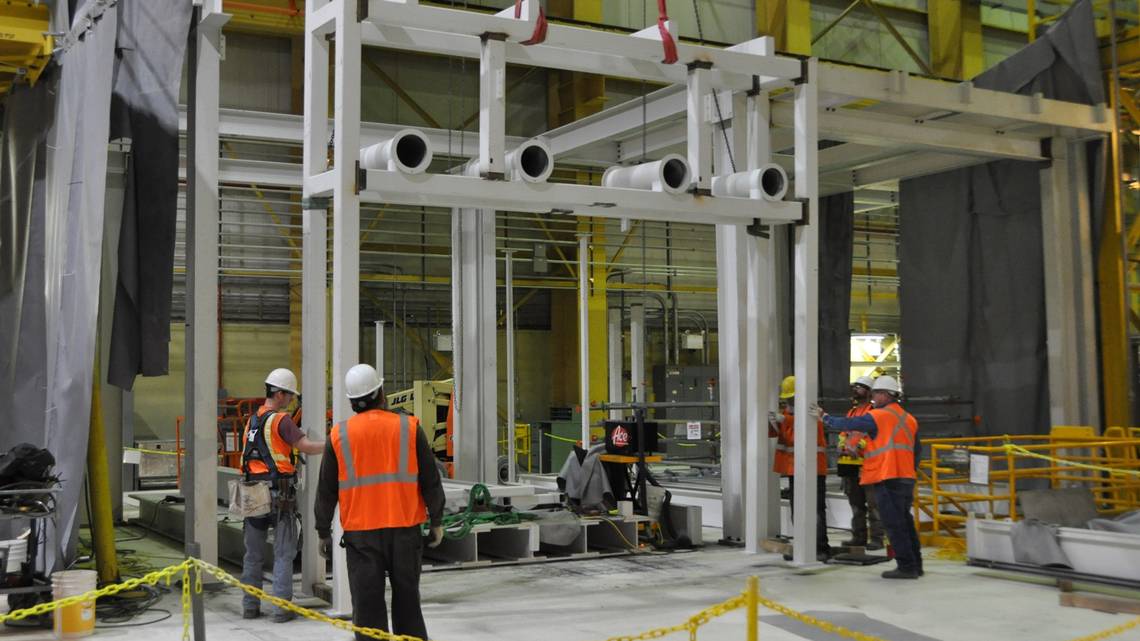The site in Eastern Washington was used during World War II and the Cold War to produce plutonium for the nation’s nuclear weapons program. It was left massively contaminated with radioactive and hazardous chemical waste, which is being cleaned up now at a cost of about $2.5 billion a year.
BY ANNETTE CARY | tricityherald.com

Thousands of Hanford workers will stay home for a second day Tuesday after the Department of Energy announced Sunday evening that the site was going into a temporary planning status to ensure the safety of employees during the COVID-19 pandemic.
Only workers essential to the nuclear reservation’s safety and security should report to work, unless they receive a call from their supervisor saying they are needed for planning work, DOE said.
Hanford employs about 9,300 workers, plus some additional subcontractor employees.
The instructions to stay home unless contacted by a supervisor apply to all federal, contractor, subcontractor and union craft employees including those who report to work in the secure area of the nuclear reservation and those who have offices in the Tri-Cities, DOE said.
DOE and its contractor officials are using the pause for planning to assess what work can be done at the nuclear reservation in Eastern Washington while keeping workers six feet apart from each other, the recommendation for social distancing to prevent workers from infecting each other with the novel coronavirus.
They also will be taking an inventory of the personal protective equipment and cleaning supplies at the site, with some of it in short supply across the nation. They will be developing strategies to conserve the site’s limited inventory.
There is no time set for when workers will return to work.
Those workers who already are telecommuting or who have been directed to telecommute will continue to work from home.
Because it is a temporary stop to work, many employees should continue to be paid, with policies similar to when bad weather causes most workers to be told to stay home.
“The Hanford Site continues to closely monitor developments associated with the coronavirus,” DOE told workers.
COVID-19 SOCIAL DISTANCING
Its goal is to follow guidance from the Centers for Disease Control, Health and Human Services and state and county public health agencies.
Some workers have posted on social media or told the Herald in recent days that they were concerned that social distancing recommendations were not being followed.
At least five employees have notified their supervisors that they were being tested for COVID-19, but DOE had not been told of any positive test results, as of Monday.
Some mobile office trailers and some individual offices have been closed for cleaning as employees who work there await test results.
Some employees have said they have been reassigned to buildings that already are full, making social distancing difficult, when offices are closed.
Others have said that hands-on environmental cleanup work projects do not allow for social distancing.
DOE has worked to increase social distancing at the site by splitting up shifts so fewer employees are working together. It also has streamlined procedures to approve telecommuting, allowing more workers to telecommute.
DOE has been holding a daily meeting with Hanford leadership on coronavirus actions, with some officials attending remotely by telephone or computer.
It has increased the frequency and depth of cleaning at the site, it said. It also has reduced in-person meetings and moved to more teleconferences and canceled some training classes, it said.
The site in Eastern Washington was used during World War II and the Cold War to produce plutonium for the nation’s nuclear weapons program.
It was left massively contaminated with radioactive and hazardous chemical waste, which is being cleaned up now at a cost of about $2.5 billion a year.
